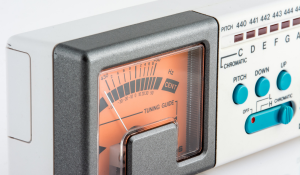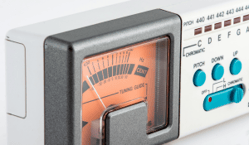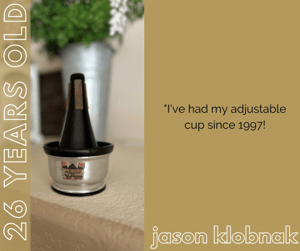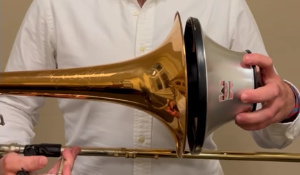The Art of Tuning: Part 2


In part 1, we established two major things about tuning; that it is by definition a comparison, and that having a consistent quality of tone is important before tuning. Now we can use those ideas to clarify some other areas of tuning and provide a guide to address some common problems.
Tuners provide data, not solutions. Tuners are a fantastic tool and invaluable to the process of tuning, but they cannot fix tuning problems any more than a thermometer can heat your home. Like a thermometer, it is a measurement device, so it can give you quantifiable data about any sound regarding its pitch both in Hertz (the frequency of the sound wave) and cents (the distance between musical notes divided into 100 equal parts). This information is incredibly helpful when determining if a single instrument is in tune; if a good tone is being produced and the tuner says the note is exactly in tune with what the tuner expects then we should be in good shape. However, what if the tuner says you’re in tune but in the context of music something still sounds wrong?
Not all temperaments are created equal. In the context of tuning, a temperament is a system of organizing frequencies with a correct or “in tune” frequency for every note. Without starting a giant discussion, it’s essential to know that the “equal temperament” system of tuning used by most tuners and fixed pitch instruments (ie instruments that cannot easily adjust their tuning on individual notes such as piano and guitar) does not always sound perfectly in tune to most people. There are countless articles and discussions on why exactly this is the case and by how much, but the bottom line is that if you hear a tuning problem in a musical context and both or all the notes being performed are considered accurate by a tuner, there is a very real possibility that the tuner and your ear are both correct. While our instinct is to trust the tuner, if something sounds wrong then trust your ears! Without even worrying about why, the goal is for the audience to hear the correct comparison of sounds, so if the tuner makes it better then great but if not don’t be afraid to adjust pitch until it sounds right to you.
Get our newest tips, updates, videos, clinics, community events, and more by joining Denis Wick Tips Blog
What changes, what doesn’t, what should, and what shouldn’t. The obvious next question is what adjustments to make and when? For this we first need to look at the situation and ask what sounds being produced have the most effect on the tuning of the group, and what sounds have the easiest or most difficult time adjusting their pitch.
In terms of what sounds have the greatest effect, the lowest sounds have the greatest effect and should always be addressed first if possible. This may not be intuitive and in fact when comparing pitches, if there is a problem we tend to hear the upper pitch as incorrect and try to adjust that note. However, once a lower pitch exists it becomes the context for the upper note and there are now a limited number of frequencies that can be played and still be considered “in tune.” Therefore it is always a good idea to check the bottom note first in any tuning diagnosis to see if the upper note should adjust to it or not.
Where this might not be true is if one or more of the instruments can not be easily adjusted, for instance a piano, synthesizer, or vibraphone. In this case it generally makes the most sense to tune to the instrument that has the most difficult time adjusting, even if it means adjusting a large group to match a single instrument or changing the written music to have fixed pitch instruments avoid certain notes. It is also worth noting that things like temperature, humidity, or altitude can affect pitch as well, often with different instruments changing in different directions. So how do we fix this?
The more complex the situation becomes, the more I always aim to simplify the problem by asking basic questions:
- What is the exact tuning problem I’m trying to fix? For example, what two notes with what instruments sound incorrect?
- Is everyone producing a good sound? If not, it needs to be addressed anyways and it might even fix the problem.
- Can both/all instruments involved be adjusted easily? If yes, check the lower note first, and if not, adjust the one that has the simplest time making an adjustment.
- What is the simplest and most consistent adjustment that can be made? Alternate fingerings or slide positions are a great way to fix small consistent issues, whereas adjusting the tuning slide for an entire instrument often creates more problems than it solves.
While this won’t fix every problem that could possibly occur, asking smart questions and being armed with good information makes us far more equipped to achieve the goal of always sounding as in tune as possible.

Is your mute older than ours? Visit our Denis Wick Artist Group Oldest Mute Gallery to view our collection and submit an image of your own mute, or story of your favorite dent, to be added to our gallery.

Find all our Denis Wick resources in one spot on the Denis Wick app. Download to view videos, clinics, educator resources, podcasts, product information & more!


